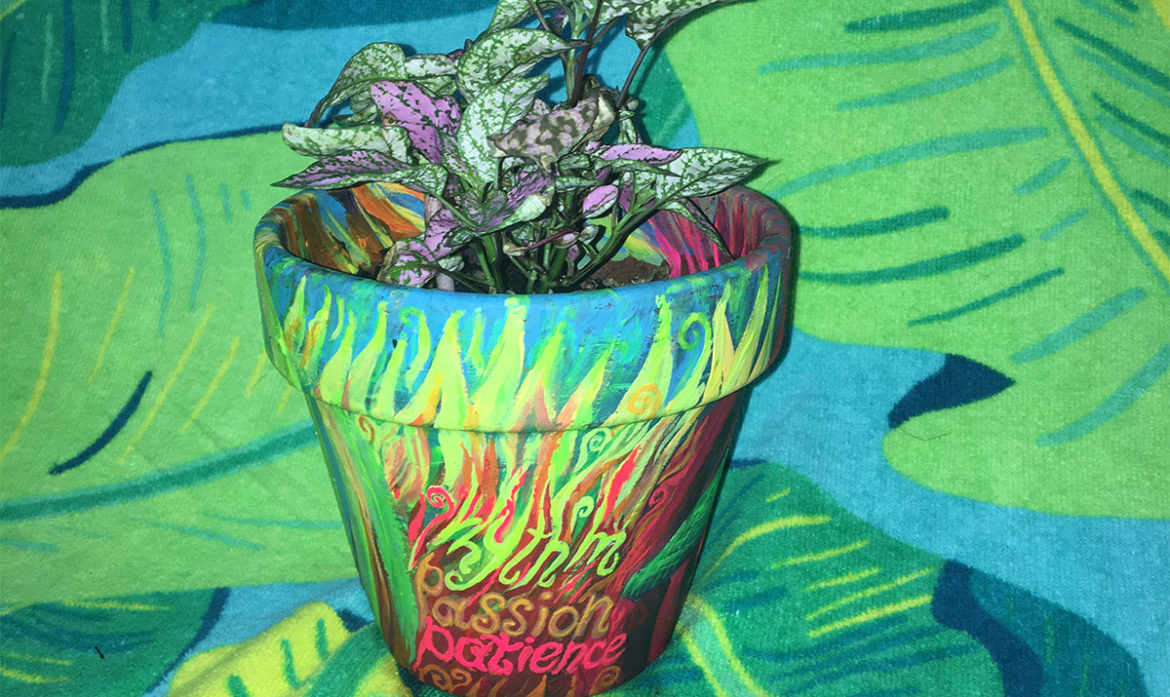At the 3rd lab of physical computing, I finally acquired enough knowledge to harness technology in a way that’s meaningful to me and my little living friends.
This lab’s objective is to create an electronic monitor
for my beloved hand-painted pots of tropical plants.
The method? Attaching a moisture sensor and an audiovisual output, so the plants can let me know when they’re dry and need watering.
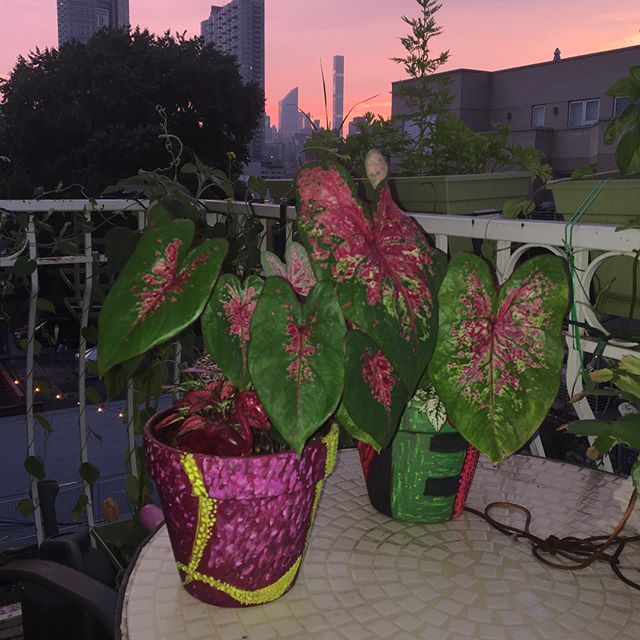
These are my baby plants, hand decorated, home-grown from seeds and bulbs.
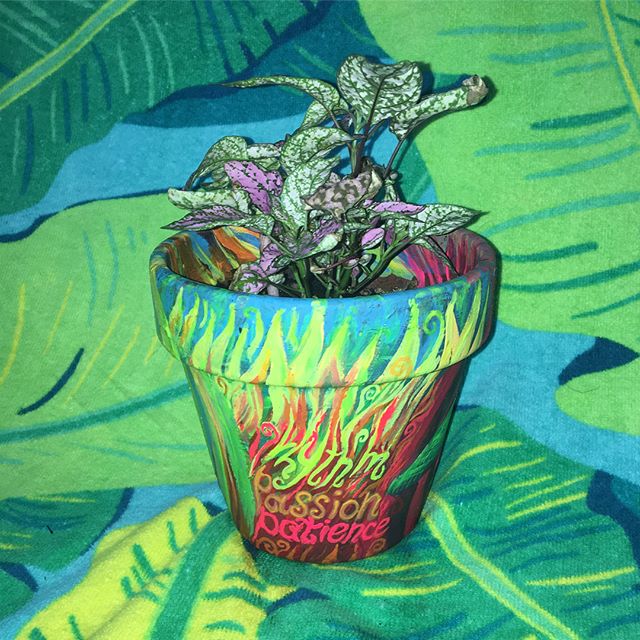
They’re like pets but better: while pets output noise and poop for me to clean, plants output oxygen for me to breathe. From an interface standpoint, plants are clearly superior, and I love them.
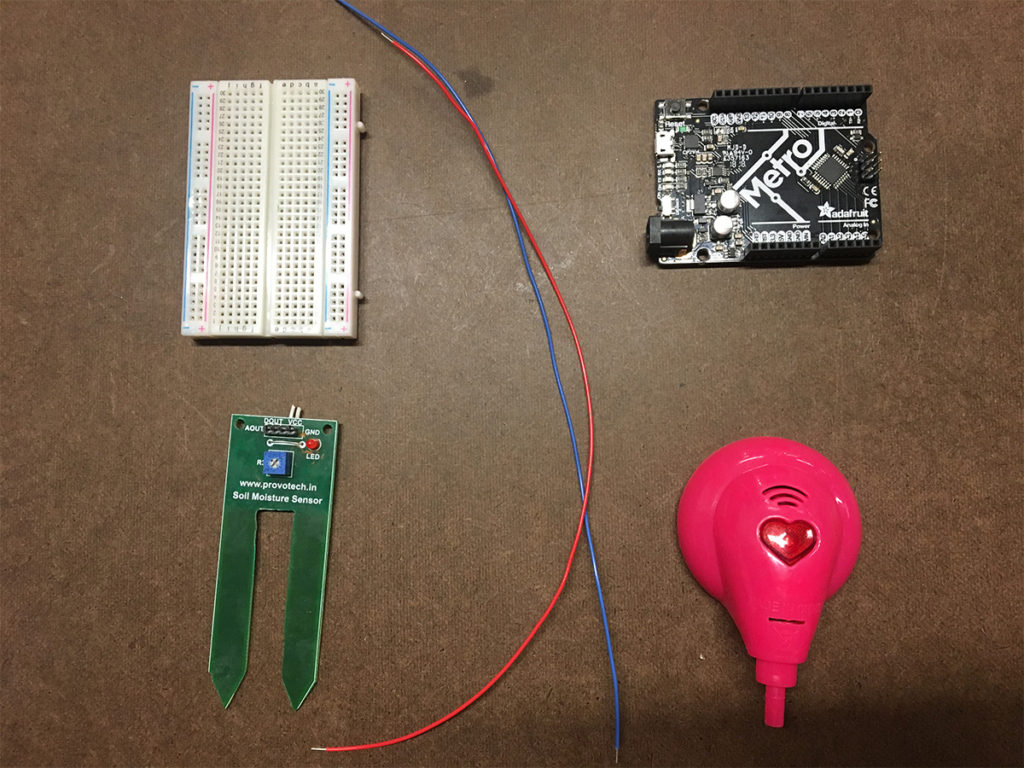
These are the main electronic components used to build the device. There’s a moisture sensor, which is basically a potentiometer that can asses the soil’s level of moisture by measuring it’s conductivity. There’s a little toy statoscope piece that produces a delightful heartbeat sound with a blinking heart-shaped light.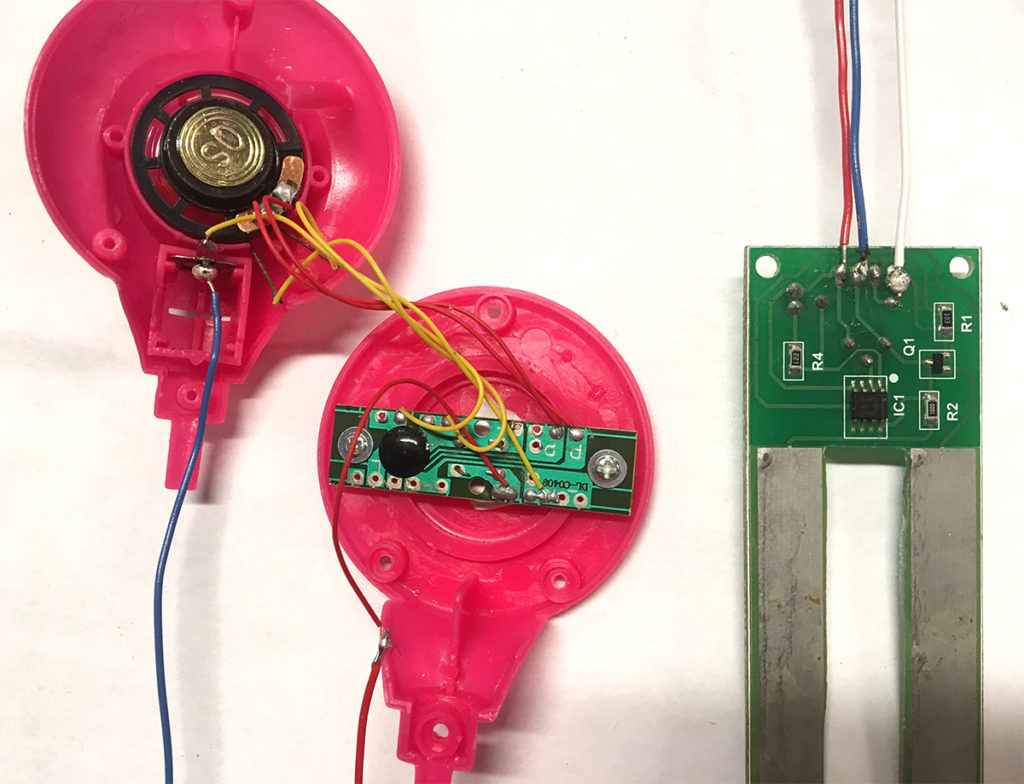
These are the input and output devices, meticulously soldered.
In order to use the device, I’ll need to calibrate it and define which moisture level results which values. Using two cups with dry and moist soil, a basic code and a serial monitor, I was able to define that:
- Moist soil provided values in the range of 270-350
- Dry soil provided values in the range of 872-1023
The logic behind the code for activating the device is detailed below.
// define moisture sensor as input
// define audiovisual toy as output
// measure moisture every 1000 milliseconds
// if moisture is lower than 400, do nothing.
// if moisture is between 400-800, run a voltage of 3v through the output to make it produce a faint audiovisual signal
// if moisture is above 800, run a voltage of 5v through the output to produce a loud bright heartbeat signal
Unfortunately the device isn’t fully working yet, but the following video sums up it’s pieces with the hope that’s it’ll be fully operational as soon as next week.

